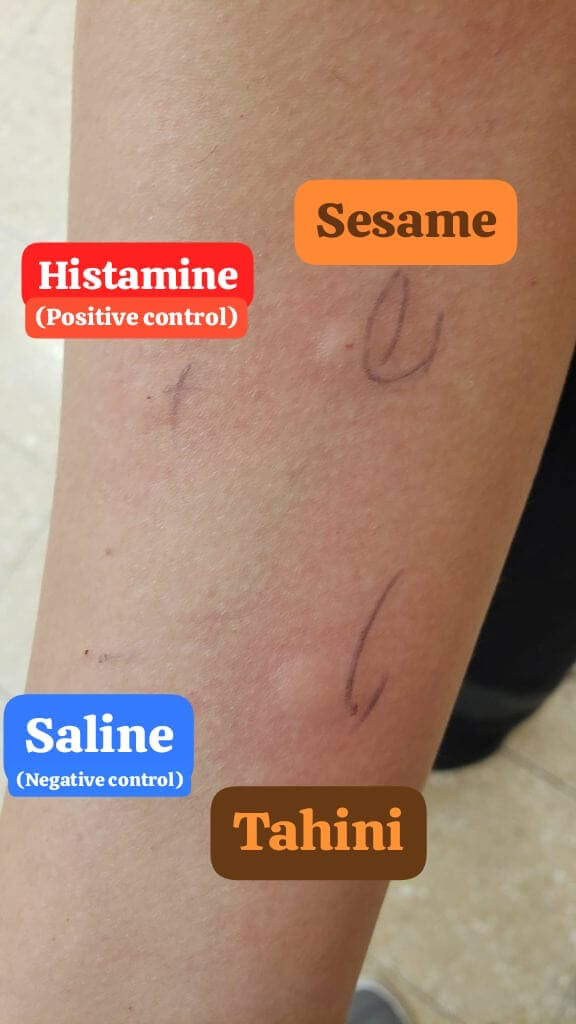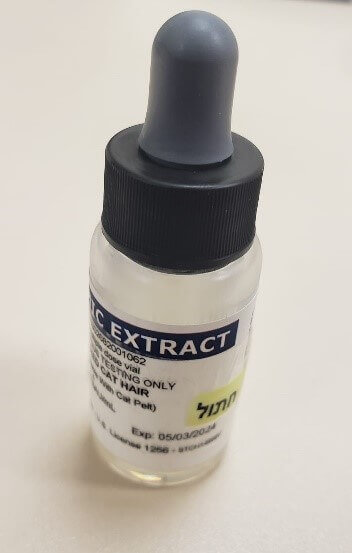
Allergy testing – how do we check for allergies in children?
Are you concerned that your child may have some sort of allergy? Have you booked an appointment with an allergist already for an allergy testing?
Let’s go through what you should expect at your appointment, and the different available ways to test for allergies in children.
Okay, so it is obvious to everyone that when an allergy is suspected, the diagnosis is based on the clinical history and the patient’s past medical history, as well as the objective investigations that are carried out with the help of an allergist.
One of the most important and most common tests are skin prick tests and we will be discussing these in this post. The following post was written by a senior pediatric allergist, Dr Yehonatan Pasternak, and you can find out more about him in the link here.
When are skin prick tests carried out?
Skin prick tests are tests that are carried out to determine whether a child has an IgE mediated allergy. IgE antibodies are associated with several different types of allergies, such as food allergies, allergic rhinitis (expand your knowledge about this here), or asthma. These tests are specific to certain allergens and can detect sensitivity that arises from antibodies directed against these allergens.
Therefore, when a patient or his/her parents report symptoms that are related to these types of allergies, skin prick tests can aid and lead us to the correct diagnosis.
Would you like an example? Here you go.
Danny ate peanuts for the first time in his life, and within minutes, he presented with a diffuse rash all over his body. This certainly raises suspicion to the type of allergy mentioned above. Therefore, in this situation, a skin prick test can confirm the diagnosis of peanut allergy. In addition, if Danny had been exposed to several types of foods at the same time a skin prick test would be able to determine which one of the allergens was the culprit.
When do we prefer not to carry out skin prick tests?
In situations that are not IgE mediated, skin prick tests are not useful and can even bring about false positive results and lead to inappropriate management. A classic example of a non-IgE mediated allergy is cow’s milk protein allergy (find out more about it here). Obtaining skin prick tests for these can cause an unnecessary delay in exposure to milk.
Additionally, skin prick tests should not be carried out on foods that do not cause the child any symptoms, or foods that the child has not yet been exposed to. Also, skin prick tests should not be carried out just because a child has a family history of allergy to a certain food.
The allergist will know how to determine what kind of tests your child needs according to their medical history and the medical diagnosis they suspect the child has.
How are allergy testing (skin prick tests) obtained?
The test has evolved over time and nowadays is carried out in the following way:
• The skin is cleaned using a sterile wipe and a few drops of protein concentrate containing the substance being tested – such as peanuts or dust mite – are dropped on the patient’s skin. See image attached.
• The patient’s skin is poked through the drop, using a small, flat needle in a superficial manner. The poke is light and may cause discomfort but does not cause pain (I’ve tried this on myself several times) and it is typically done on the arms or back. When checking for food allergy, sometimes the needle is dunked in the food itself and then the poke is done. When a panel of allergens is being tested for, such as when testing for inhaled allergens, a small plastic device with several tips can be used to shorten the length of the test.
• In addition to the substances being tested for, a few drops of water and a few drops of histamine are also poked into the skin to act as controls. The water drops are not supposed to cause any reaction (negative control) whereas the histamine is supposed to cause a positive reaction in all patients (positive control).
• The fluid is absorbed using paper towel and then there is a 15-20 minute wait time. The substance being tested for is marked adjacent to the drops.
• After sufficient time has passed, the patient’s skin is observed thoroughly. A positive test is one where redness and bumps are visible in the area of the poke (they look similar to an insect bite). The doctor will also make sure that the water drops’ test is negative and the histamine test is positive (take a look at the first image attached to this post where a sesame and tahini allergy was detected. Look at how the histamine test is positive and water test is negative). The allergist will measure the extent of the reaction in millimeters with the help of a rule and will document this in the patient’s chart.

Is it a scary or painful test?
As mentioned above, it really isn’t. Obviously in children it is important to be gentle and understanding, and to try and calm the child down and address their concerns. From my experience, when the parents are calm, they portray confidence to the child and are able to really facilitate with the process.
How does one prepare for these tests? Are there any special instructions?
Allergy skin tests can be affected by different medications, especially anti-histamines and therefore one must stop taking these medications several days prior to the test. However, discontinuing inhalers given to asthmatic patients is unnecessary.
What do the results of the skin prick test mean?
The analysis of the results depends on the patient’s medical history. Generally speaking, one can say that a negative test rules out the possibility of an allergy at a high probability whereas a positive test can strength the probability that this is truly an allergy. I must say however that there are patient who test positive despite not having the allergy (false positive) and that is why carrying out skin prick tests without taking into consideration the patient’s symptoms can be confusing and is not recommended.
Is this test safe? Where is it carried out?
The chances of developing an allergic reaction when undergoing skin prick test are impossible, and therefore these tests can be carried out in community clinics, at the discretion of the pediatric allergist and do not necessarily have to be done in hospitals.
What about blood tests for allergies?
An alternative to skin prick tests are blood tests that are done to look for specific IgE antibodies against different substances. The main disadvantage of this test is the discomfort of the procedure (drawing blood from a vein) and the fact that the results are not available immediately. Sometimes blood tests help confirm the diagnosis when the skin prick tests are not clear cut or when it is not possible to carry out skin prick tests. The efficacy of the blood test is similar to the skin prick tests and the rules for obtaining skin prick tests apply to the blood tests.
In summary, skin prick tests are a simple, fast and efficient tool that aids in the diagnosis of allergic diseases. Consult with your pediatric allergist to make a decision about the right test and treatment for your child.
Best of luck and lots of health!
For comments and questions, please register
